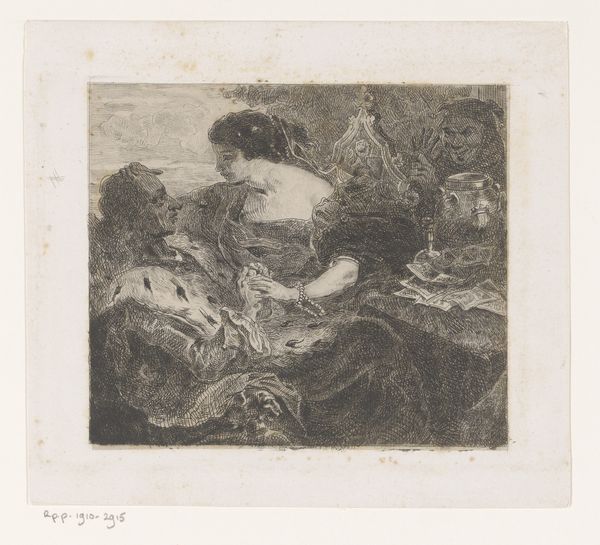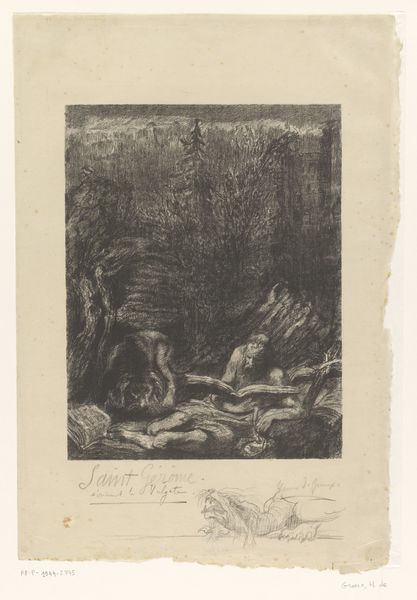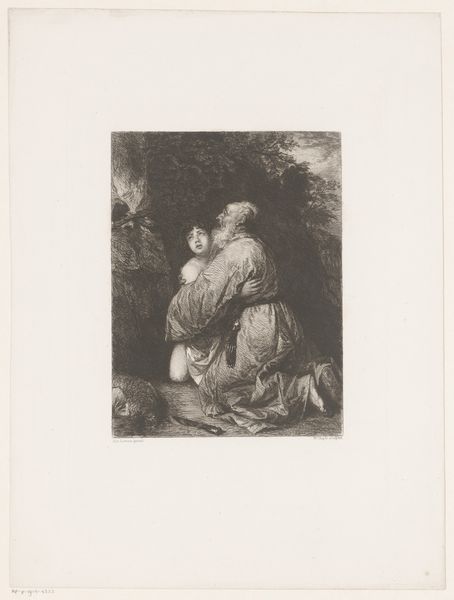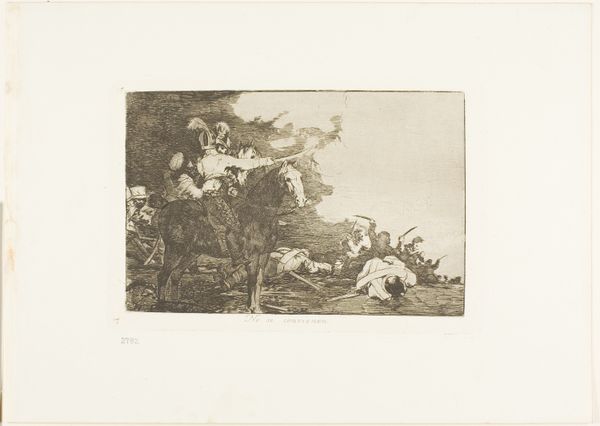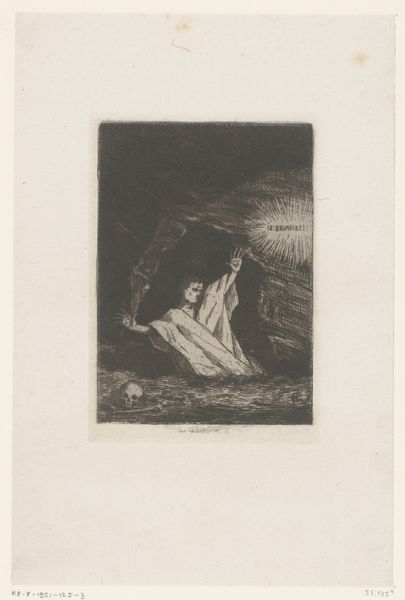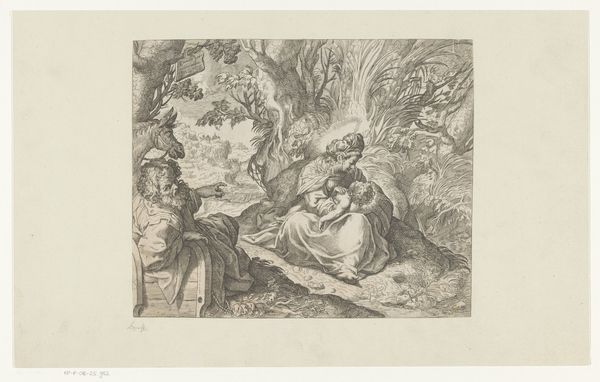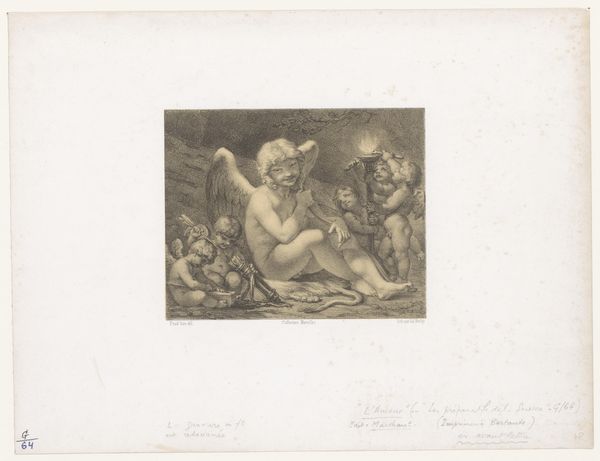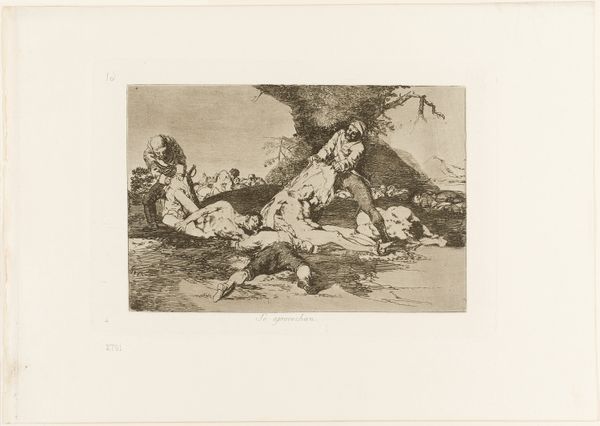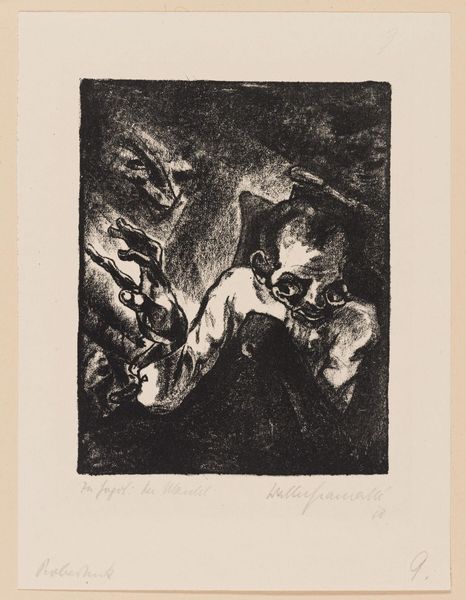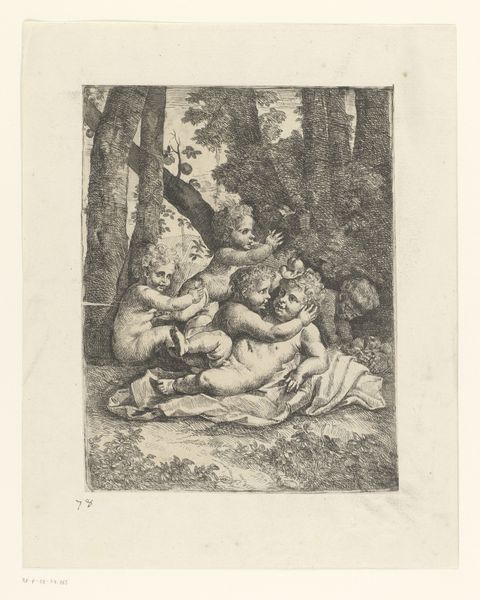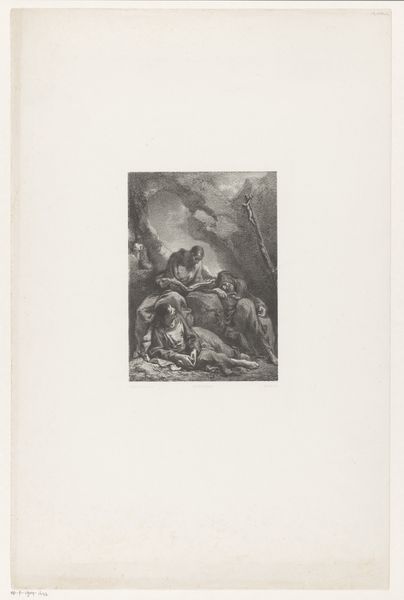
print, etching, engraving
#
narrative-art
# print
#
etching
#
landscape
#
figuration
#
symbolism
#
engraving
Dimensions: height 130 mm, width 125 mm
Copyright: Rijks Museum: Open Domain
Editor: This is Henri van der Stok’s "De barmhartige Samaritaan" or "The Good Samaritan", an etching from 1910 housed at the Rijksmuseum. It has such a dark, almost claustrophobic feel. What strikes you first about this piece? Curator: The use of line is compelling. Notice how the density and directionality of etched lines create not just form, but also a palpable sense of depth and texture. Look at how the light source is handled; it's not just illuminating the figures, it’s shaping the emotional atmosphere. Do you see how the brightest area also guides our gaze to the focal point of the Samaritan aiding the injured man? Editor: Yes, I see how the light draws your eye. But the darkness around it seems to almost overwhelm them. Curator: Indeed. Consider also the symbolic weight of the composition. The horizontal orientation accentuates the earthiness, drawing our eyes from left to right, telling a sequential, perhaps cyclical story. The figures are nestled among rocks and scraggly bushes. Editor: It definitely adds to that feeling of being enclosed, and the texture is so rough! It seems less about idealizing the figures and more about emphasizing the setting. Curator: Precisely. Van der Stok directs our attention less to ideal human forms and more to the very act of human compassion—in the rawest environment. Did you also observe how the limited palette, typical of etching, forces us to perceive tonal subtleties? Editor: I hadn’t thought of it that way. Now I see how the monochromatic palette makes those lines and shapes even more important. Thank you! Curator: Of course. And recognizing these formal elements allows us a richer appreciation of its symbolic depth and expressive power.
Comments
No comments
Be the first to comment and join the conversation on the ultimate creative platform.
